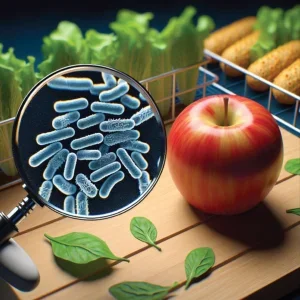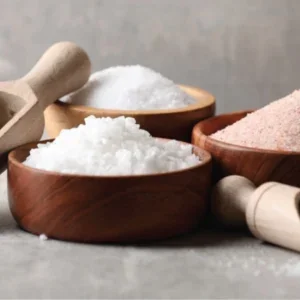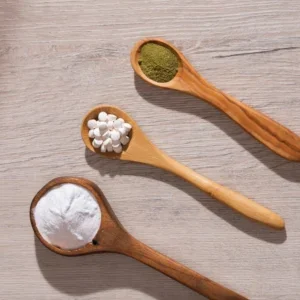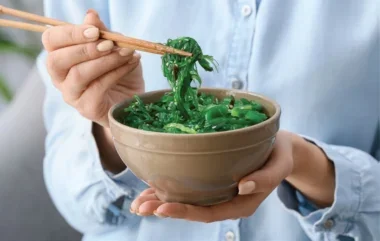
On a Saturday morning, you might find Leonel Pereira on the shores of Figueira de Foz, a popular seaside destination in the centre of Portugal. But he won’t be there for a refreshing dip. He’ll be foraging for seaweed to complement his traditional Portuguese Sunday lunch. With an important disclaimer: “It’s risky to collect it yourself,” he warns. Pereira is an associate professor at the University of Coimbra who has been researching seaweed for almost two decades, and knows what he is looking for and what to avoid. For the uninitiated, he says, the correct way is to go to the store.
The good news is that there are more and more options on the supermarket shelves, reflecting a growing awareness of the health benefits of seaweed. Pereira reels off a long list of Portuguese supermarkets now offering various seaweed-based products, and the trend is not limited to Portugal; similar patterns are emerging globally. In Europe more broadly, for example, data from Mintel’s Ingredientscape AI tool showed the use of seaweed in new food and drink product launches “steadily increased” across Europe between 2005 and 2023. Some scientists are now touting it as the next superfood.
“Seaweed has all the necessary nutrients for the human body: proteins, carbohydrates, vitamins and more, with very low calories,” Pereira says. “It also contains fantastic omega-3 and omega-6 fatty acids. People who eat fish to obtain these nutrients can reduce their fish consumption by incorporating algae, which directly produces omega-3 and omega-6.”
Amy Williams, nutrition lead at nonprofit think tank the Good Food Institute (GFI) Europe, is another advocate of algae. “It is an important source of long-chain omega-3 – because this is where fish get it from – as well as being a good source of protein that can be easily absorbed by the body.
It’s also capable of being grown in conditions that can enhance the presence of other micronutrients, such as zinc or iodine,” she explains.
“And, unlike land-based crops, algal plants like duckweed have the advantage that you can eat the whole thing. Seaweeds and microalgae, such as spirulina, also contain unique compounds that can stimulate beneficial gut bacteria and have anti-inflammatory and antioxidant properties.”
Research has also shown that seaweed offers significant cardiovascular and cognitive benefits. The omega-3 fatty acids found in seaweed help lower blood pressure and reduce the risk of heart disease by improving cholesterol levels. Additionally, it contains bioactive compounds that support brain health, improve memory and focus, and may even help reduce the risk of neurodegenerative diseases such as Alzheimer’s by combating oxidative stress and inflammation.
A sustainable alternative for fish and seafood
Due to its nutritional profile, components of algae are increasingly being used as part of cultivated fish products. As Williams explains, “Some companies are now fortifying their plant-based fish with longchain omega-3 derived from algae-based ingredients. Finding new sources of omega-3 is urgently required as many people are deficient in this micronutrient and global fishing levels are already insufficient to meet global needs.”
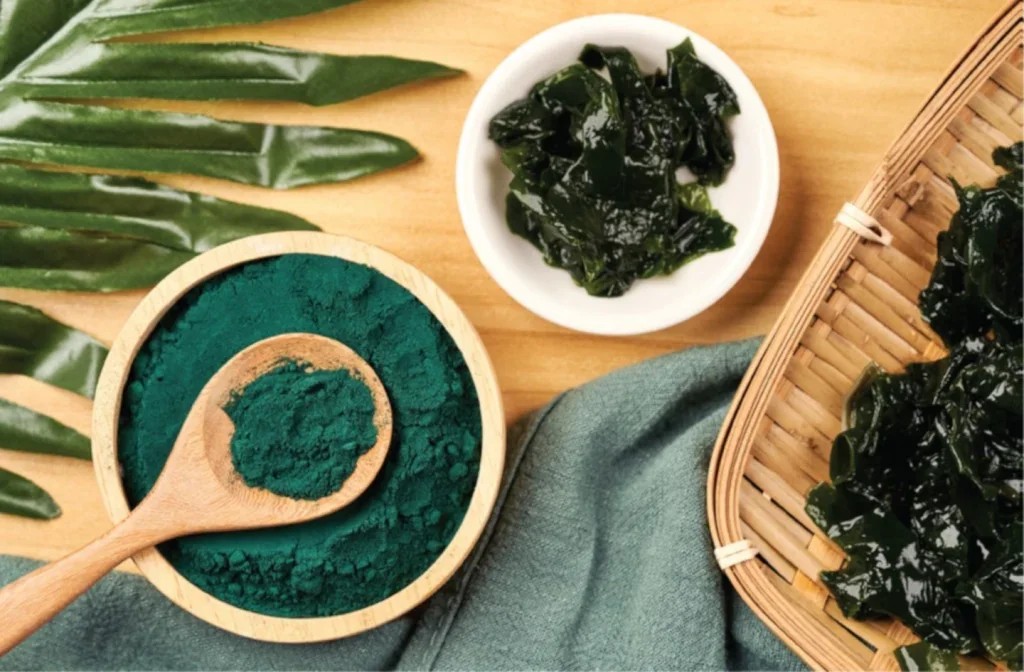
For example, Portuguese researchers recently developed the world’s first 3D-printed seabass fillets using cultivated fish and microalgae, and work has taken place to explore whether algae can be used to reduce the cost of developing other cultivated seafood products.
“Precision fermentation – which uses natural microorganisms such as yeast to develop a wide range of ingredients – can also be applied to algae, producing sustainable omega-3 as an essential ingredient for plant-based and cultivated seafood,” adds Williams’ colleague Stella Child, research and grants manager at the GFI Europe.
“This is sorely needed as Europe imports three times more seafood than it produces, and nearly half of EU marine habitats are assessed as endangered or near threatened. Global demand for seafood is expected to increase by 5% over this decade and aquaculture is only expected to keep pace in 17 countries, with 800 million people at risk of malnutrition if the local catch continues to decline.”
Algae production also compares favourably with traditional land-based agriculture, offering a sustainable, high-yield alternative that requires no fresh water, pesticides or arable land. What other food ingredient has the potential to be cultivated at sea, thriving in the open ocean between the turbines of offshore wind farms?
A project by North Sea Farmers testing this hypothesis recently received €1.5m from Amazon to explore large-scale seaweed farming in these spaces. Beyond offshore wind farms, algae can also be grown in coastal sea farms, land-based aquaculture systems and bioreactors, making it one of the most versatile and scalable potential food sources for the future.
“Algae is capable of growing faster, being harvested more regularly and using fewer resources than land- based crops,” Child stresses. “As well as helping tackle problems such as overfishing, microalgae can be grown in large tanks and so has the advantage that it can be produced anywhere.”
Changing perceptions about seaweed on the table
Pereira’s focus is not so much on algae as an element of cultivated seaweed, but as an ingredient in its own right that can be used as an alternative to fish. In his home country of Portugal, fish and seafood form a large part of the diet, deeply embedded in both cultural traditions and nutritional habits. Bacalhau – or salted cod – is perhaps the most iconic example, with hundreds of traditional recipes based on it.
However, with concerns over overfishing, sustainability and dietary diversity, introducing seaweed as a complementary ingredient or partial substitute presents an opportunity for a more balanced approach. But changing perceptions is not easy – bacalhau is more than just a food; it’s a symbol of Portuguese identity, making any shift towards alternative ingredients a challenge that requires both culinary creativity and cultural sensitivity.
“It’s not necessary to abandon bacalhau, but it is important to reduce the amount,” Pereira says. Seaweed can be introduced as one more component of Portuguese gastronomy – not the main component, but an additional ingredient. These days, young people go to Chinese and Japanese restaurants to eat seaweed, but it’s important to introduce it in a Portuguese way. You can use it in soups, rice dishes and traditional recipes – keeping the Portuguese culinary identity while adding a new ingredient.”
It’s what he’s trying to do with his ‘Seaweed on the Table’ workshops, which he started in 2009.
“Back then, people thought I was a little crazy because historically seaweed was only used as fertiliser, not food. But now, years later, people say, ‘Oh yes, the food is very good, very healthy.’”
Overall, however, seaweed consumption in Portugal is still low. “Statistics show that Portuguese people use about six kilos of seaweed per year, but mostly indirectly – through products like gelatines and protein extracts. Very few people consume seaweed directly,” Pereira explains. “At the University of Coimbra, my colleagues and I worked with the university chef to develop seaweed recipes for students and faculty – soup, rice, gelatine and more. It was a way to show how seaweed can fit into everyday meals.”
Seaweed standards for boosting safety
Another issue with algae adoption is that not all seaweed is created equal. Where Pereira goes to collect seaweed on the beach near his home, he knows it is safe. In Portugal, more widely, there are no nuclear installations so the country also doesn’t have problems with radiation in its seaweed. “In some other countries, like Japan, seaweed is cultivated near Fukushima, where there were radiation leaks. It’s important to check the origin of the seaweed you buy,” Pereira stresses. But even in Europe, he always advises an excess of caution, particularly while legislation in this area is still being developed.
“Some seaweed species naturally contain high levels of certain minerals, like arsenic, which can be dangerous if consumed in large amounts. The issue is not the seaweed itself, but how much you eat over time. That’s why regulation is essential,” he says. “People need to understand the risks of collecting seaweed themselves. If you gather it near industrial areas or places with heavy pollution, the seaweed will absorb contaminants from the environment. The safest option is to buy from stores where quality is controlled.”
For his part, Pereira is working with the European Algae Biomass Association (EABA) to develop legislation that ensures seaweed used for food is free from contamination – whether it’s heavy metals, microplastics or radiation. This includes working with EABA colleagues to compile a list of edible seaweed species, which will help evaluate their nutritional benefits and identify possible contaminants. “Right now, food laws are designed for conventional ingredients, not for new foods like seaweed. We need to change that,” he believes.
He is also focused on transferring the scientific knowledge he and his colleagues have been gathering over the years to the market. “We know a lot about seaweed – its quality, its compounds – but the information isn’t always accessible to the public or businesses. Collaboration is key to making seaweed a viable food option.”
With all this potentially on the table, who else is ready to book a spot at one of Pereira’s workshops?



